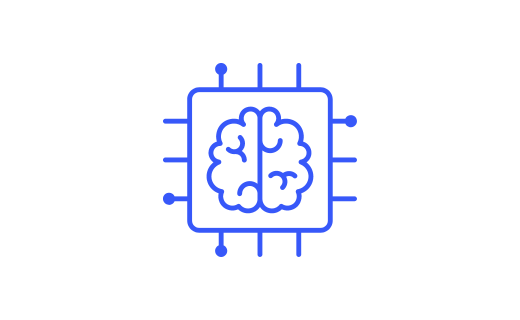About article
The Latest Trends in Ransomware Detection and Tailgating Attack

In a world where everything is digitally hyperconnected, cybersecurity is on the frontline with evolving constant threats such as ransomware and tailgating attacks. Ransomware refers to malicious software that significantly threatens any organization, regardless of its magnitude or size, by blocking access to a computer system until money is paid. On the other hand, tailgating uses baiting for unauthorized entry to secure areas, consequentially tugging at the human element in security vulnerabilities by simply following authorized persons into these areas.
This article explains the new trends in detecting and mitigating these threats. Whether advanced ransomware detection technologies or proactive security strategies, staying ahead is everything; let us delve into the forefront of cybersecurity defenses against ransomware and tailgating attacks.
Understanding Ransomware: The Basics
Ransomware is a variety of malware designed to encrypt files, baiting users out of their systems and extorting them for payment in some cryptocurrency to decrypt the files or restore access. Ransomware usually spreads through URL blacklists, phishing emails, infected links, and by not following the Sender Policy Framework (SPF). Once infected, the ransomware propagates extremely fast, targeting domestic users and organizations of every possible sector.
The motive is monetary, exploiting the victims' urgency to recover access to crucial data or systems. Effective defense lies in robust cybersecurity measures: frequent backups, current software patches, and user education to identify and avoid phishing attempts. Understanding these basics is vital in mitigating ransomware's damaging impact.
Evolution of Ransomware Tactics
It is now a grimly complex strategy from simple encryption to maximize one's effect and profitability. Early variants of ransomware just indiscriminately target and encrypt files for ransom. When defenses improved, ransomware improved with more sophisticated techniques that included targeted attacks on high-value assets and organizations.
Some strains include data exfiltration threats that threaten to leak sensitive information if the ransom demands are unmet. A significant factor behind the rise in ransomware is that, with ransomware-as-a-service (RaaS) platforms, even technically illiterate actors could deploy ransomware. Relatedly, double extortion—the threat of publishing data—raises additional pressure on the victim.
Detecting Ransonware Early
Early detection lowers the potential impact of ransomware. For instance, indicators could include sudden file encryption, changes to file extensions, or even ransom notes left behind on affected systems. Advanced endpoint ransomware detection technologies can monitor sudden file encryption events or attempts at unauthorized access. Further, this makes it plausible in terms of detection capabilities, behavioral analysis, and machine learning algorithms to identify patterns of ransomware-like behavior and nip it in the bud before significant damage is done.
Monitoring abnormal traffic patterns or connections to known malicious domains indicates running ransomware. Again, regular backups and proper incident response plans are critical to ensuring quick recovery in case of an attack. At the same time, the possibility of minimizing ransomware risks through early ransomware detection exists.
The Importance of Proactive Security Strategies
Proactive security is the most elementary part of ransomware defense against changing cyber threats. Unlike the reactive approach, where responses are made after an attack, proactive measures ensure that the risk is anticipated and mitigated in advance. This consists of continually monitoring networks and systems for vulnerabilities, regularly updating security patches and software, and implementing robust access controls and encryption protocols.
Regular security assessments, coupled with penetration testing, can be carried out to identify any possible weaknesses and improve them before the attackers use them. Proactive measures will also include user education regarding the safest cyber practices that will help recognize and frustrate phishing attempts, among other social engineering methods. Taken together, proactive email security measures defend against emerging cyber threats targeted at sensitive data or systems.
What is Tailgating Attack?
A tailgating attack, or piggybacking, occurs anytime an unauthorized individual enters a restricted area by following behind an authorized person. The security risk is founded on human behavior and trust, bypassing the controls that prevent unauthorized access. It mostly happens at places with access by swipe cards or badges; that is, an intruder sneaks unnoticed right behind a real user.
Tailgating attacks expose organizations to significant risk by nullifying many physical security measures for protecting sensitive areas, data centers, or facilities. Preventive measures include employee training, extremely tight access policies, and implementing technology such as turnstiles or mantraps for entry that will deter unauthorized access.
Tailgating Attacks: Baiting Techniques
Tailgating attacks use different ways of gaining unauthorized entry. Busy entry points are usually targeted due to the number of people entering at any moment. This could let an attacker get in unnoticed since it is human nature to keep a door open after somebody or just rush through without having one's credentials checked. Another way is social engineering, where, in most cases, attackers charm their way in to gain access by persuasion or fooling the employees who might let them in.
Tailgating occurs during shift changes or when security personnel become distracted. This factor has contributed chiefly to tailgating in cases where vigilance is low. In light of this, especially putting tight access control, educating the personnel on the security protocols involved, and using biometric scanners are effective remedies for mitigating these vulnerabilities.
The Impact of Tailgating Attacks on Security
Tailgating can reveal the most crucial security risks in access control and the authenticity of secure environments. It establishes unauthorized access to safe zones, data centers, or facilities from within by sidestepping protection against physical breaches. In such an event, the most obvious outcome would be the theft of intellectual property, equipment, or sensitive information. This could disrupt business by giving access to safety procedures and the risk of non-compliance with regulatory policies and laws.
The abrasion of trust in security measures is becoming more evident with repeated tailgating incidents, and a facility is brought further vulnerability to an even graver breach. These security risks call for solid security protocols, awareness training programs for employees, and technological solutions such as biometric authentication to ensure an unauthorized access attempt does not succeed in infiltrating systems through social engineering or by outsmarting security infrastructure.
Behavioral Analysis for Tailgating Detection
One of the most critical threat detection and mitigation methods today is behavioral analysis, which detects abnormal behavior patterns in a system or network. Cybersecurity mainly encompasses users' actions against the system to set baselines of behaviors. Activities outside these norms could pose a potential security breach—access out of regular hours, unauthorized access to files—which may indicate ransomware or insider threats.
Advanced machine learning algorithms increase the efficiency of behavioral analysis by continuously learning and adapting to new threats, thus improving detection accuracy. This allows organizations to respond aptly to potential threats that may be scouted first, thereby beefing up the overall cybersecurity posture about evolving risks.
The Role of AI and Machine Learning


AI and machine learning have become critical in enhancing detection, response, and prevention for better security. AI allows for the examination of vast reams of data, recognizing patterns and anomalies that might otherwise go unnoticed via traditional methods. Hence, AI improves early threat detection such as ransomware and phishing attacks. Machine learning algorithms learn from new data to improve real-time prediction and mitigation techniques to fight new risks.
AI-powered automated response mechanisms make incident response much faster, reducing damage and downtime. Next, AI-driven technologies will fortify the proactive defenses of organizations to be better placed in forewarning, anticipating, and countering the ever-evolving cyber threats that would improve the resilience of their cybersecurity framework.
Innovations in Cybersecurity
The recent evolution of security software has dramatically shifted how organizations protect against cyber threats. One noteworthy development has been integrating AI and machine learning into predictive analytics, enhancing threat detection and incident response capabilities. Modern behavioral analytics platforms monitor user activities in real-time for anomalies indicative of ransomware or insider threats.
Besides that, advanced endpoint detection and response technology provides better views into network-related activities, drastically increasing the speed of incident investigation. Cloud-based security solutions offer scale and flexibility, while threat intelligence feeds give proactive defense strategies. All these combined innovations allow organizations to stay ahead against ever-evolving cybersecurity threats and be capable of robust protection against sophisticated threats.
Conclusion
The basis for protecting sensitive data and operational integrity lies in knowledge of the evolving ransomware detection in the cyber threat landscape, such as ransomware attacks and tailgating attacks. While ransomware is a rapidly changing strategy, the threat of tailgating targets human vulnerabilities; therefore, proactive measures using AI-driven analytics, behavioral monitoring, and next-generation security software are all the more critical.
Early detection and response, coupled with innovation in security technologies, can enable organizations to mitigate risks effectively against these threats. Equally essential is educating employees on email authentication, better security practices, and implementing robust access controls. These cybersecurity approaches strengthen its defenses against existing threats while preparing it for future cyber threats with resilience and readiness.
Everything you need to power up your email game in one place.
Start now for free. No credit card required.
